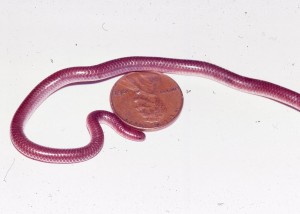From common garden snakes to rattlesnakes to king cobras, BYU biologist said all snakes have the same common ancestor: a blind grandpa.
The new study suggested that the common ancestor was a small, blind underground species called scolecophidia that mostly fed on termites and ant larva.

The study used the largest molecular data set ever assembled and was conducted by biologists at San Diego State University, Brigham Young University, Stony Brook University, University of Texas-Austin, Yale and the Field Museum of Natural History. The data included sequences from 44 genes, resolved for 161 species representing all recognized families and major groups of living snakes and lizards.
Jack W. Sites, Jr., BYU biology professor, co-authored the study. Sites was invited to join the “Deep Scaly” team that began work in 2004 to resolve controversies in the branch of the tree dealing with snakes and lizards. After seven years of research, his team has met every goal in their original grant-winning proposal.
“It really was surprising to find that the root of most modern snakes goes back to that one group,” Sites said. “Whether they live in trees or the ocean, whether they are constrictors or venomous snakes, whether they are 25-inch garter snakes or 25-foot anacondas, they all have the same small, semi-blind ancestor.”
The thousands of species of snakes today have all adapted from the ancient scolecophidians. The ancestor was small with a rounded head, small eyes and a small mouth. The jaw flexibility that many snakes possess today that allows them to swallow their prey is apparently an adaptive trait, as scolecophidians did not have the capability to do so.
John J. Wiens, a professor of ecology and evolution at Stony Brook University, was the lead author on the study.
“No matter where they live, snakes have an elongate body and a relatively short tail, and outside of snakes, this body shape is only found in lizards that live underground,” Wiens said in a press release. “Snakes have kept this same basic body shape as they have evolved to invade nearly every habitat on the planet.”
The professors were aided by 25 undergraduate students and multiple graduate and post-doctoral researchers, including Bryce Noonan from Ole Miss.
“This was the last stepping stone in my post-doctoral education,” Noonan said. “I’ve spent time at a number of schools, and the amount of resources and experiences provided by BYU for graduate and undergraduate research is amazing.”
Whether it’s a rattlesnake or a common garden snake, BYU professors and researchers have shown that all snakes belong to the same big family.




